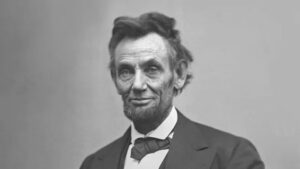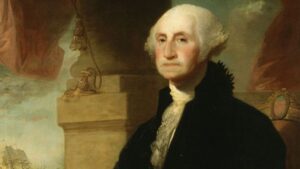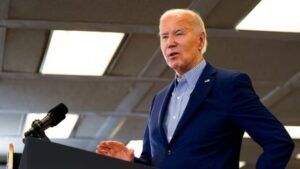In the annals of United States history, the presidency has been occupied by individuals of varying backgrounds, experiences, and physical attributes.
While height may not be a prerequisite for presidential leadership, it remains a notable characteristic that has caught the attention of historians and enthusiasts alike.
In this Height Comparison exploration, we delve into the intriguing topic of the tallest presidents in United States history, shedding light on the towering figures who have graced the Oval Office.
As we embark on this journey through the corridors of power, we uncover these towering leaders’ unique stories and legacies, exploring how their height may have influenced perceptions, policies, and presidential demeanor.
From their towering physical stature to larger-than-life personas, the tallest presidents stand as towering symbols of American leadership, leaving an indelible mark on the nation’s history and collective memory.
Join us as we crack the fascinating tales of the tallest presidents in United States history, gaining insight into the intersection of height and presidential leadership and discovering the towering figures who have shaped American history.
List of Tallest Presidents in United States History

1. Abraham Lincoln (6 feet 4 inches)
 Abraham Lincoln, towering at 6 feet 4 inches, served as the 16th President from 1861 to 1865.
Abraham Lincoln, towering at 6 feet 4 inches, served as the 16th President from 1861 to 1865.
Renowned for his leadership during the Civil War, Lincoln preserved the Union, issued the Emancipation Proclamation to abolish slavery, and delivered the Gettysburg Address, which articulated the principles of democracy and national unity.
His steadfast resolve and eloquent speeches continue to inspire generations, earning him a place among the most revered presidents in American history.
2. Lyndon B. Johnson (6 feet 3.5 inches)
 Lyndon B. Johnson, standing at 6 feet 3.5 inches, served as the 36th President from 1963 to 1969.
Lyndon B. Johnson, standing at 6 feet 3.5 inches, served as the 36th President from 1963 to 1969.
His presidency was marked by the passage of landmark civil rights legislation, including the Civil Rights Act of 1964 and the Voting Rights Act of 1965, as well as the implementation of ambitious social welfare programs through his “Great Society” agenda.
Despite his achievements, Johnson’s presidency was marred by the Vietnam War, overshadowing some of his domestic policy successes.
3. Thomas Jefferson (6 feet 2.5 inches)
 Thomas Jefferson, towering at 6 feet 2.5 inches, served as the third President from 1801 to 1809.
Thomas Jefferson, towering at 6 feet 2.5 inches, served as the third President from 1801 to 1809.
As a Founding Father, he authored the Declaration of Independence, facilitated the Louisiana Purchase, and founded the University of Virginia, leaving an enduring legacy of democratic principles and intellectual pursuit.
Jefferson’s presidency was characterized by his commitment to limited government, agrarian ideals, and the expansion of American territory through diplomatic and economic means.
Despite his complex legacy, Jefferson’s contributions to American democracy and intellectual thought remain influential today.
4. Franklin D. Roosevelt (6 feet 2 inches)
 Franklin D. Roosevelt, with a height of 6 feet 2 inches, served as the 32nd President from 1933 to 1945.
Franklin D. Roosevelt, with a height of 6 feet 2 inches, served as the 32nd President from 1933 to 1945.
His presidency was defined by the New Deal programs, which aimed to address the Great Depression, and his leadership during World War II, guiding the nation through one of its darkest periods with his fireside chats and decisive actions.
Roosevelt’s innovative policies transformed the federal government’s role in American life, laying the groundwork for social welfare programs and economic regulations that endure to this day.
Despite facing significant challenges, including his battle with polio, Roosevelt’s leadership and optimism inspired confidence and hope in the American people.
5. George Washington (6 feet 2 inches)
 George Washington, also standing at 6 feet 2 inches, served as the first President from 1789 to 1797.
George Washington, also standing at 6 feet 2 inches, served as the first President from 1789 to 1797.
Known as the “Father of His Country,” Washington’s leadership during the Revolutionary War and his dedication to democratic principles laid the foundation for the nation’s future, exemplifying integrity, humility, and steadfastness.
Washington established presidential precedents as the inaugural President, including the two-term limit and the tradition of delivering an inaugural address.
Despite facing numerous challenges, including establishing a new government and quelling domestic unrest, Washington’s leadership and vision set the standard for presidential leadership, earning him the admiration of future generations.
6. Bill Clinton (6 feet 2 inches)
 Bill Clinton, towering at 6 feet 2 inches, served as the 42nd president from 1993 to 2001.
Bill Clinton, towering at 6 feet 2 inches, served as the 42nd president from 1993 to 2001.
His presidency was marked by economic prosperity, welfare reform, and efforts to promote peace in the Middle East and Northern Ireland despite impeachment proceedings over personal conduct issues.
Clinton’s tenure in office was characterized by his ability to navigate political challenges and foster bipartisan cooperation on issues such as free trade, balanced budgets, and crime reduction.
Despite his controversies, Clinton’s enduring popularity and influence in the Democratic Party have solidified his status as a prominent figure in American politics.
7. Ronald Reagan (6 feet 1 inch)
 Ronald Reagan, with a height of 6 feet 1 inch, served as the 40th president from 1981 to 1989.
Ronald Reagan, with a height of 6 feet 1 inch, served as the 40th president from 1981 to 1989.
Known for his conservative policies and practical communication skills, Reagan implemented tax cuts, deregulation, and a strong stance against communism, reshaping the political landscape and fostering the end of the Cold War.
Reagan’s presidency was marked by economic expansion, military buildup, and a renewed sense of national pride, earning him the nickname “The Great Communicator” for his ability to connect with the American people.
Despite criticism for handling social issues and foreign policy challenges, Reagan’s leadership inspires conservatives and shapes the Republican Party.
8. Barack Obama (6 feet 1 inch)
 Barack Obama, standing at 6 feet 1 inch, served as the 44th president from 2009 to 2017.
Barack Obama, standing at 6 feet 1 inch, served as the 44th president from 2009 to 2017.
He made history as the first African American President, championed healthcare reform with the Affordable Care Act, and navigated the country through economic recovery and international challenges, including the killing of Osama bin Laden and the Iran nuclear deal.
Obama’s presidency was characterized by his message of hope and change, inspiring millions of Americans to engage in politics and work towards a more inclusive and prosperous future.
Despite facing partisan opposition and policy challenges, Obama’s legacy as a transformative leader and symbol of progress remains influential in American politics and society.
9. Donald Trump (6 feet 1 inch)
 Donald Trump, with a height of 6 feet 1 inch, served as the 45th tallest president from 2017 to 2021.
Donald Trump, with a height of 6 feet 1 inch, served as the 45th tallest president from 2017 to 2021.
His presidency was marked by controversial policies, including tax cuts, immigration reform, and efforts to renegotiate trade agreements, as well as his unconventional communication style and impeachment proceedings.
Trump’s presidency was characterized by polarization, populist rhetoric, and a focus on issues such as immigration, trade, and national security.
Despite his divisive tenure in office, Trump’s influence on American politics and public discourse continues to be felt, shaping debates over issues such as populism, nationalism, and the future direction of the Republican Party.
10. Joe Biden (6 feet)
 Joe Biden height, standing at 6 feet tall, currently serves as the 46th tallest president, having assumed office in 2021.
Joe Biden height, standing at 6 feet tall, currently serves as the 46th tallest president, having assumed office in 2021.
His presidency focuses on combating the COVID-19 pandemic, addressing climate change, and promoting economic recovery and social justice, building on his decades-long career in public service and commitment to unity and empathy.
Biden’s leadership style is characterized by pragmatism, compassion, and a focus on bipartisanship as he seeks to unite a deeply divided nation and address pressing challenges facing the country.
Despite facing significant obstacles and political polarization, Biden remains committed to his vision of building back better and restoring America’s standing on the world stage.
Final Note
The tallest presidents in United States history have significantly contributed to the nation’s development and progress. From Abraham Lincoln’s leadership during the Civil War to Lyndon B. Johnson’s advancements in civil rights, their towering stature is matched by their impactful policies and enduring legacies.
These tallest presidents have left an indelible mark on American history, reminding us of the importance of strong leadership and resilience in times of challenge.
As we reflect on their achievements, we are inspired to uphold the values of democracy, equality, and unity that define the American spirit.






